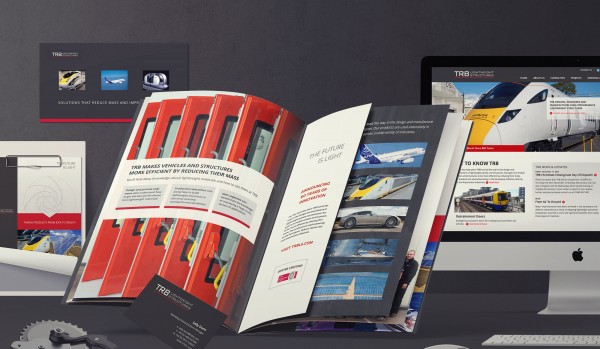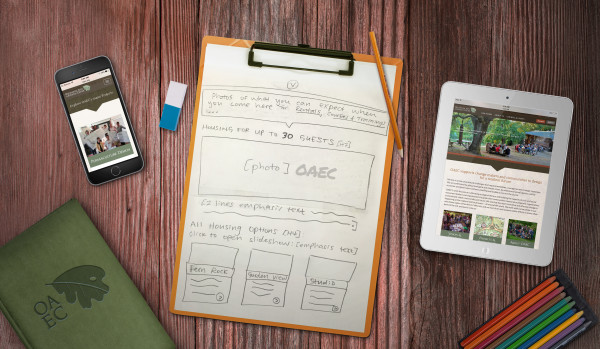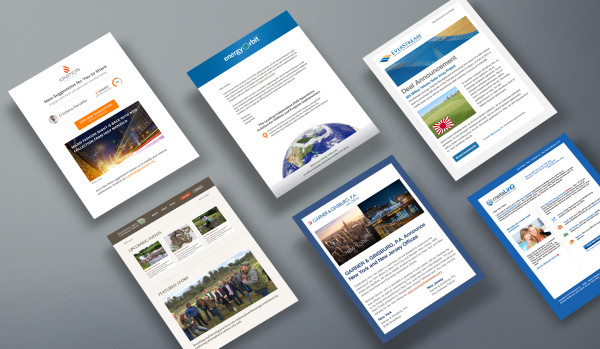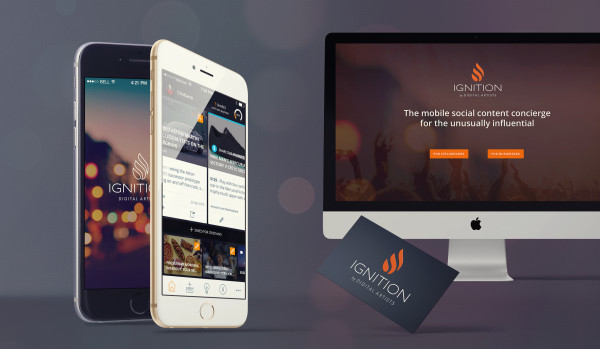
Email is a Powerful Tool for Building Traffic and Increasing Sales
I decided to do an update on an article I wrote five years ago titled, “Is Email Still King of Internet Marketing?” Clients, wide-eyed about social media marketing, would ask, “How do we go viral on Facebook?” Clients had no idea how much work it takes to “go viral” on social media. More concerning, the same people asking about social media put little effort into collecting email from website visitors. I would encourage a more practical route–” Let’s focus our effort on better utilizing email capture and sending out follow-up email communication.” Clients grudgingly went along, disappointed we were not doing more work to “go viral.”
Some years ago a large movie studio contacted 1stWave about redesigning their corporate website. They also wanted us to help them with their global social media strategy. During our brainstorming sessions, one of my colleagues said, “We need to think big and encourage them to embrace cutting edge social media strategies.” Being somewhat contrarian, I took the opposite position, with such a loyal fanbase for their various media properties, they should build a core strategy around email rather than put all their resources into Facebook and Twitter.
MAKE SURE YOU ARE INVESTING IN EMAIL CAPTURE
This conversation inspired me to think about why people and organizations under utilize email. The reason is that social media and the allure of going viral has such a grip on the collective imagination. Most clients don’t have the budget for the upfront legwork that is required to generate and sustain “buzz” on social media — at least not the type of buzz of popular imagination, with millions of new followers overnight. Time would be better invested expanding a network of contacts and relationships via email. Email is a proven and effective tool for maintaining a relationship with customers and constituents, especially if the email is opt-in and someone gave it to you rather than being acquired from a list.
Fast forward five years. During a recent browsing session, I was stunned at how many sites are throwing up email request popups on the homepage of their site. The prevalence of email pop-ups is a good indicator that these companies place a high value on being able to connect with customers and prospects via email.
So, let’s take a look at two important components. One, how do you best capture new email contacts and two, how do you ensure your emails don’t get thrown into junk/spam filters?
Here are some examples of email capture forms. Note that they all have in common some type of incentive or selling point to encourage you to offer up your email address.
EMAIL CAPTURE EXAMPLES
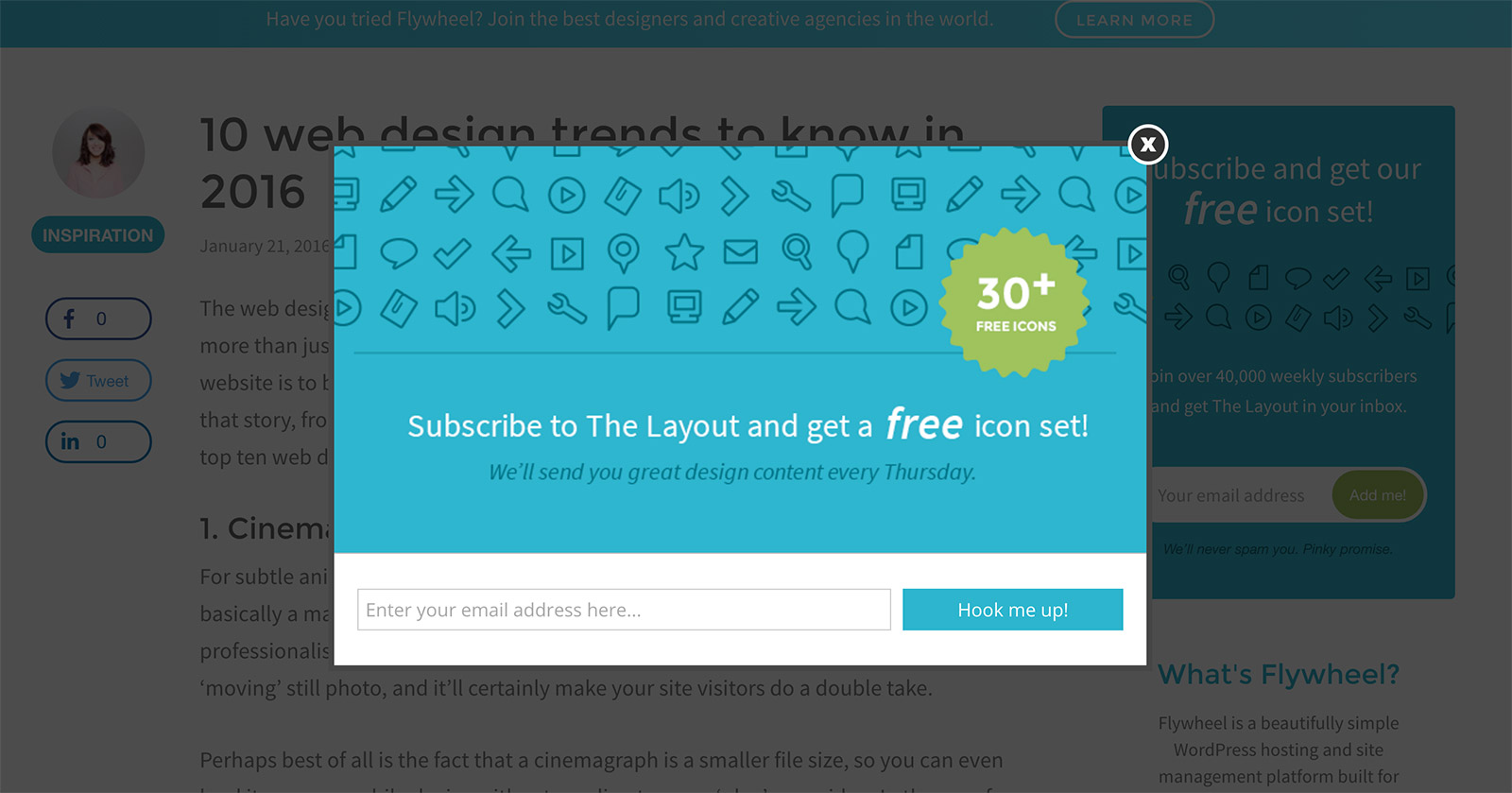
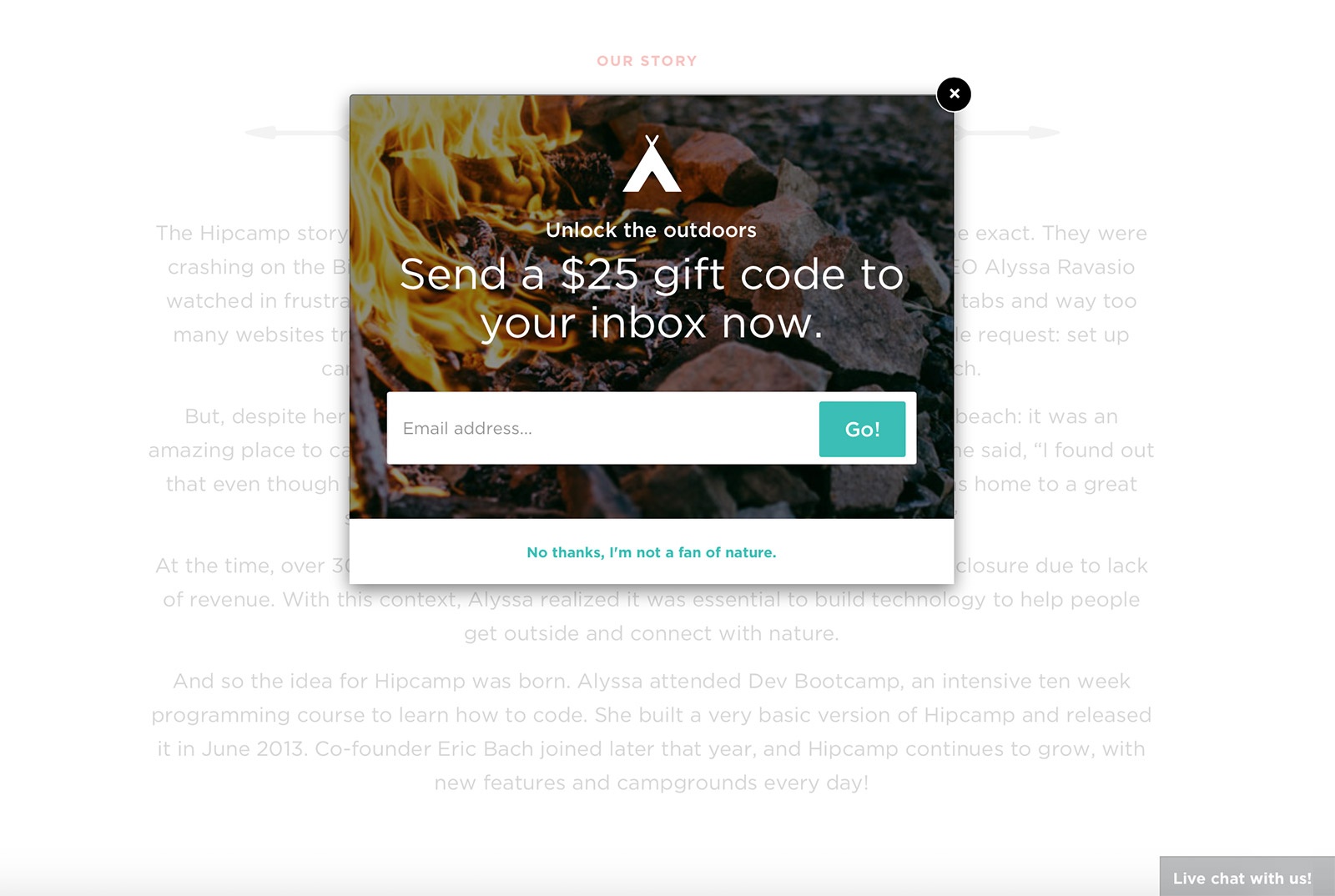
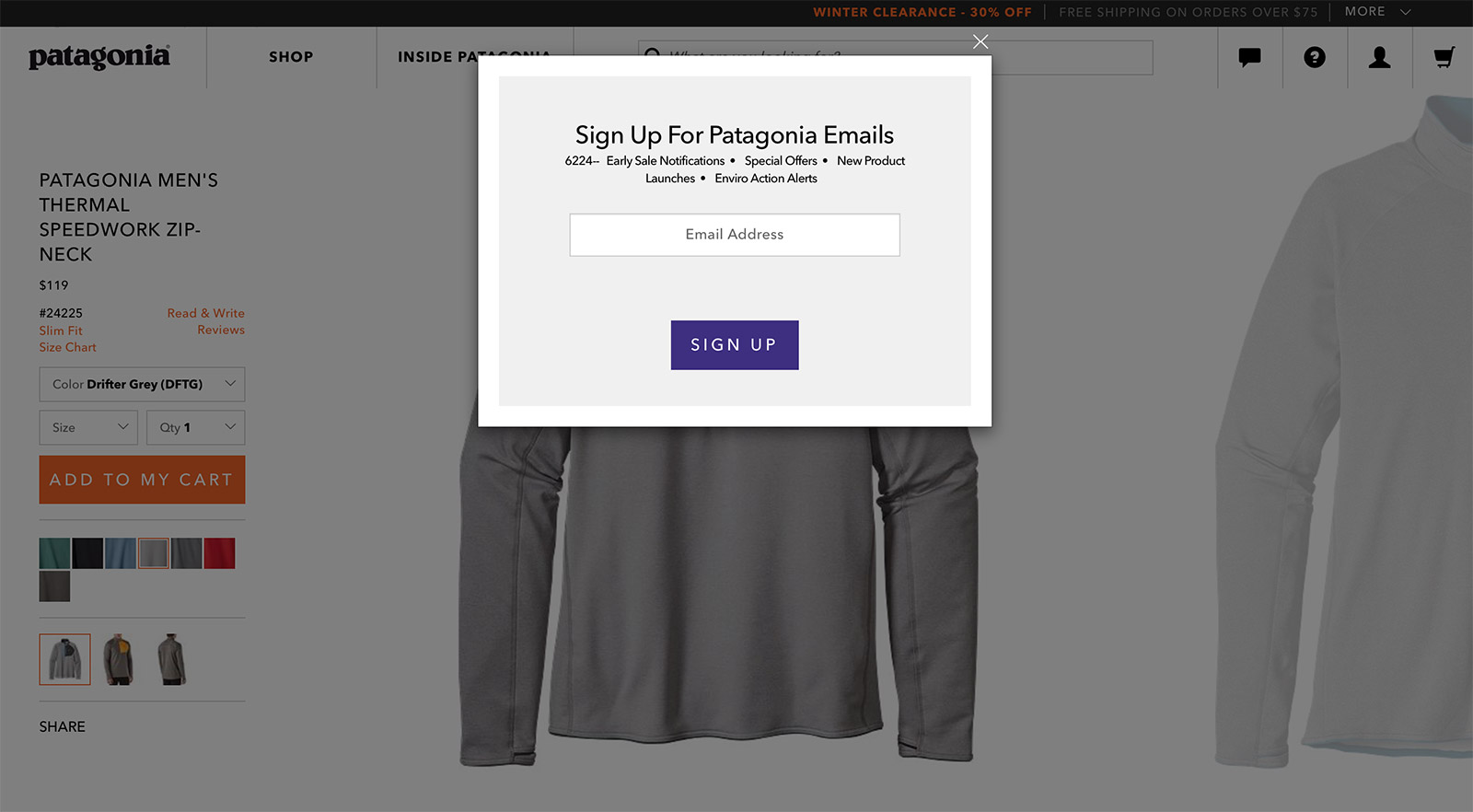
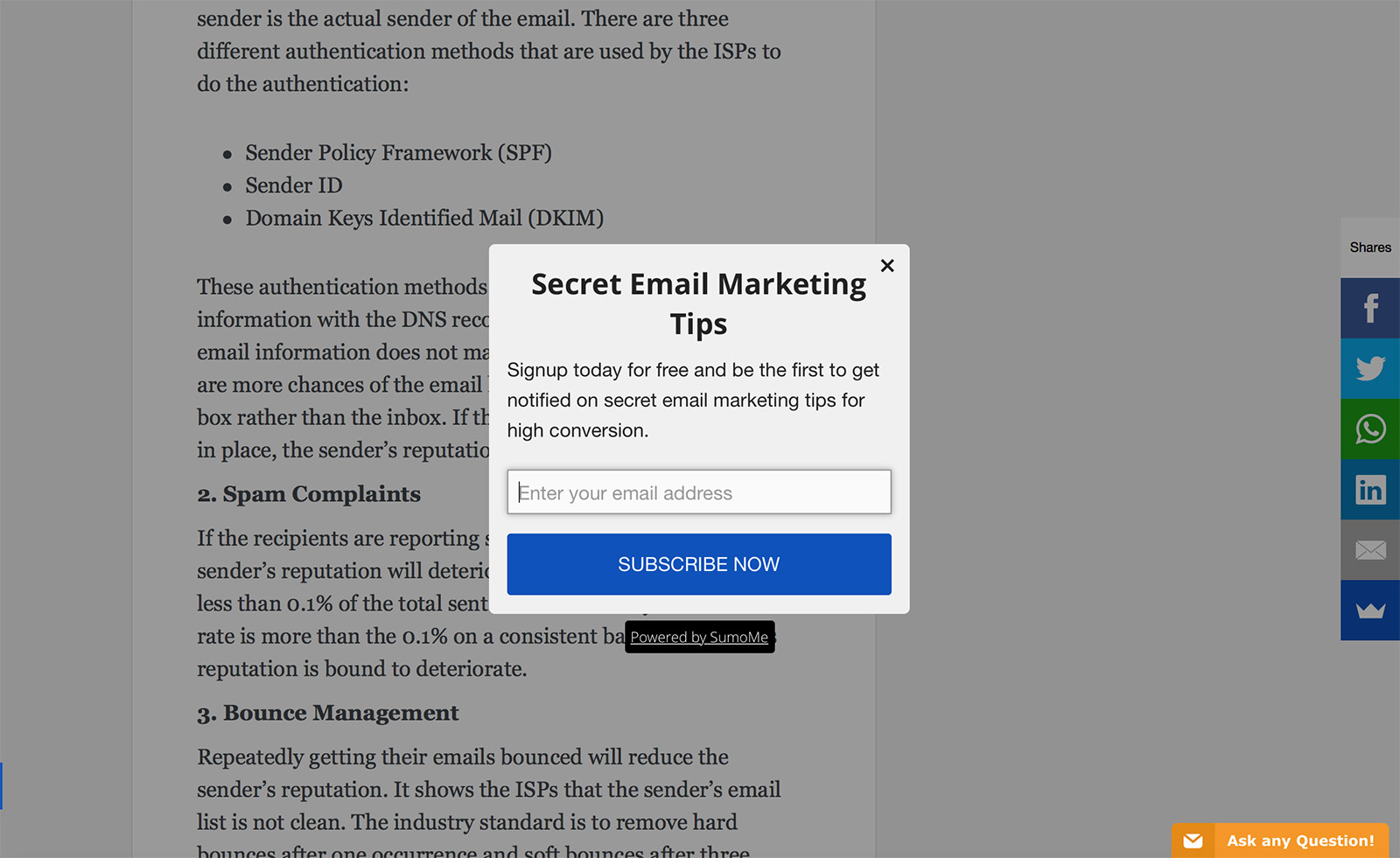
EMAIL DELIVERABILITY
Now let’s talk about an issue that challenges many organizations–email deliverability. As email applications get better at blocking “unwanted,” non-opt-in emails, more and more legitimate opt-in email ends up in junk or spam folders without ever being seen by the recipient. Why does this happen? Here is a brief outline. We found an article titled The concept of Micro-Deliverability in Email Marketing to be one of the more insightful explanations of why emails get blocked. Here is an outline of the main factors influencing whether or not an email will reach your recipients’ inbox:
1. Sender Reputation: The company (your ISP) that delivers your internet connection will attempt to authenticate that you are the actual sender of the email. Sounds obvious enough (most email platforms such as MailChimp and Constant Contact will do a good job on this front) but there are some subtle nuances that may cause some ISP’s to flag your email for lack of authentication.
2. Spam Complaints: If more than 1 out of every 100 recipients reports your email as unwanted spam, ISP’s will flag you and question the validity of your email “opt-in” list. If these are really customers then why are they reporting you as spam?
3. Bounce Management: Your reputation as a “good email sender” will suffer if a high number of your constituents’ email addresses are old or outdated, i.e. they bounced back because the recipient no longer has an email account with the address on file. The industry average for “soft bounce” rates is 1.5% and .5% for hard bounce rates. A soft bounce means the email address is still valid but could not be delivered to temporarily. A hard bounce means the email address is no longer valid or in use.
4. Recipient Engagement: If your open rate exceeds the industry average of 20%, ISP’s will deduce that your content isn’t junk or spam.. If the number of people who fail to open or read your email falls below 20%, however, there is a good chance ISP’s will grade you down for having a high proportion of people in your email lists that are not interested in your content.
SMTP Relay Issues: For organizations sending more than 25,000 emails to a list, one of the problems is the sheer number of emails going out. Many ISP’s will flag the sender IP address and mark all outgoing emails as spam.
We hope this article inspires you to allocate more resources towards an effective email communications strategy.
